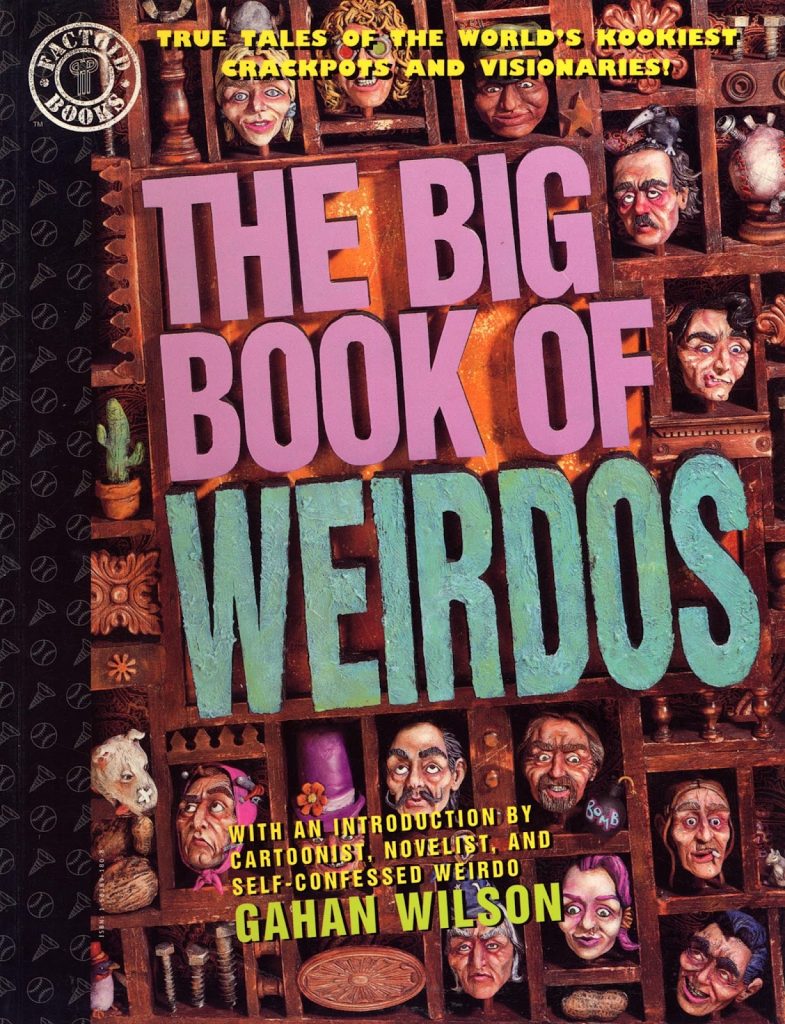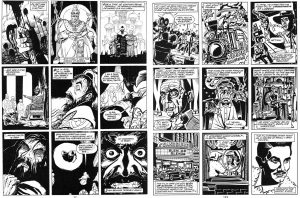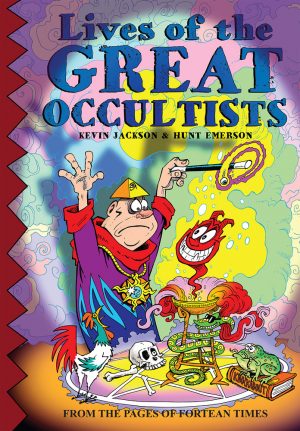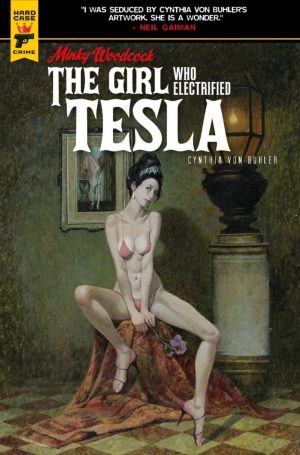Review by Frank Plowright
One weird thing about The Big Book of Weirdos? The cover prominently mentions the introduction from Gahan Wilson, but completely ignores novelist Carl A. Posey who wrote the 67 brief biographies covering over two hundred pages.
67 people is a lot of weirdness, and Posey describes the behaviour that makes the entries a viable fit. Some, like Caligula or Adolf Hitler could do what they pleased without thought of laughter, much less condemnation, as their rule was absolute. It’s only in hindsight that their weirdness can be highlighted. Likewise, as long as a talent makes money, they’ll be indulged, so film director Erich Von Stroheim, the often misguided inventor Thomas Edison, and Henry Ford’s peculiar views were given free rein. However many entries concern people following self-destructive behaviour patterns like Guy DeMaupassant, Edgar Allen Poe and Vincent Van Gogh, and the weirdness of others stems from mental illness. Posey follows the irreverent tone of all Big Books, but in this case there’s the occasional feeling of cheapening tragedy for a quick laugh.
Beyond those inclusions there are a few others who don’t greatly seem to conform with the back cover definition of people whose life was defined by their weirdness. World War I hero T. E. Lawrence’s story is drawn by Greg Ruth, and presents a man who never coped with peacetime, and his considerable success is belittled by defining him as a crackpot. As drawn by Art Wetherell, Clara Bow’s inclusion is even more puzzling. She enjoyed her fame as a silent film star, had a healthy sexual appetite that scandalised at the time, but not a voice that transitioned from silent movies to talkies. She never coped with no longer being in demand. Does this make her a weirdo? Thankfully, such contentious entries are few.
As is the case with all Big Books, the art mixes established professionals such as Joe Staton, Tom Sutton and Peter Kuper (great on J. Edgar Hoover) with a good eye for artists who’d do very well, although not necessarily in comics. Robert McCallum would become an in-demand storyboard artist, while Will Simpson designed all the weapons seen on Game of Thrones. D’Israeli, Simon Fraser and Frank Quitely are among others included who’d have acclaimed careers. The sample art pairs Ed Hillyer’s Ivan the Terrible and Mitch O’Connell’s Ed Wood Jr.
Probably mindful of litigation, almost all subjects were already dead at the time of publication, so there’s nothing on Michael Jackson, for instance, although June Gibbons remains alive and the subject of a 2022 film, and Screaming Lord Sutch was alive on publication. With misgivings about trivialising mental problems, The Big Book of Weirdos remains a compelling insight into eccentricity from Hetty Green’s extraordinary miserliness, to the strange Shipwreck Kelly who made a career of sitting on flagpoles for prolonged periods.
Brian Pearce is credited for interior design, but there’s no credit for cover design, and the screwball motif is funny and worth mentioning.





